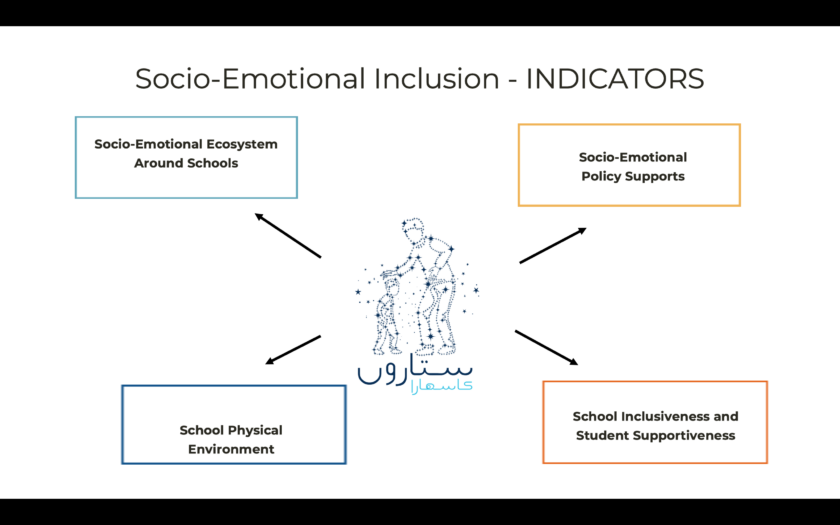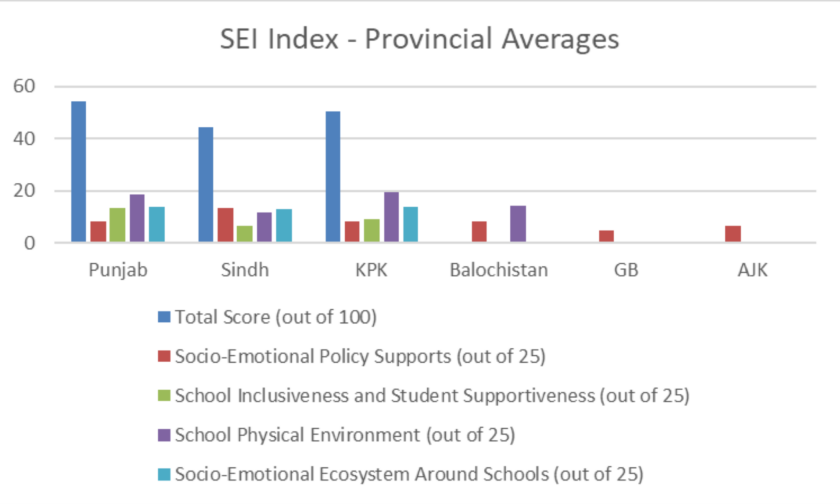The OICSD collaborated with Education South Asia to host a one-day symposium on “Education and Inequity: Perspectives from South Asia” at Somerville College in May 2024. This article was part of the presentations at the symposium. The authors, Danya Haseeb and Usama Javed Mirza are researchers at Saving 9. Usama is also a candidate for PhD in Education as a Gates-Cambridge Scholar at the University of Cambridge.
Meet Ali, a 13-year-old student in a public school. Every day, he faces anxiety as he walks past broken boundary walls and crowded classrooms. His teachers are overwhelmed, unable to give him the support he needs. At home, Ali’s parents are too busy to engage with his schoolwork. He struggles with lessons taught in a language different from the one spoken at home. With no counsellors or proper sanitation facilities at school, Ali feels both isolated and unsafe.
This isn’t just Ali’s story—it’s the reality for many students across Pakistan.
A New Way to Quantify Mental Health in Schools
Mental health is one of the most complex and deeply personal aspects of our well-being. It’s inherently qualitative, shaped by countless factors that vary from one individual to the next. As such, it resists easy quantification. However, when it comes to influencing public policy, numbers often speak louder than words. Policymakers and politicians thrive on data that they can use to present a narrative to their constituencies—a story told in graphs and rankings that makes sense to the public and shows tangible progress (or lack thereof).
That’s why the Socio-Emotional Inclusion Index (SEII) could be transformative. Mental health, particularly in the context of students in schools, has rarely been captured in measurable terms. Until now, policymakers have had no concrete way to track the socio-emotional conditions in classrooms. SEII changes that. It offers a tool that can quantify what has often been considered unquantifiable, providing a nuanced, evidence-based picture of what’s happening in schools.
By leveraging data from existing public sources, this index brings the socio-emotional well-being of students into the spotlight in a way that hasn’t been done before. It gives policymakers the language and framework to talk about mental health—and crucially, to act on it.
The Four Major Indicators: A Comprehensive Approach to Mental Health

What makes the SEII truly powerful is its comprehensive approach. The index doesn’t rely on a single data point but instead draws from a wealth of literature on the many factors that influence mental health.
Mental health is, at its core, a product of our environment – and for students, that environment includes not only the physical setting of the school but also the emotional and social support systems surrounding them. This includes parents, teachers, peers, and policy frameworks. To capture this complexity, SEII is built around four primary indicators, each of which is made up of multiple sub-indicators, providing a rich and detailed picture of a district’s socio-emotional health.
- Socio-Emotional Policy Supports: This indicator evaluates the soundness of policies related to child welfare, such as laws against child labor, bullying, and harassment.
- School Inclusiveness and Student Supportiveness: This measures how schools create inclusive environments. It considers how well teachers, counselors, and peers support students emotionally in their learning environments.
- School Physical Environment: The physical state of schools—from having boundary walls to the availability of safe drinking water—can have a significant impact on students’ well-being.
- Socio-Emotional Ecosystem Around Schools: This looks beyond the school itself to assess the broader social and emotional ecosystem, including parental involvement and community engagement.
How SEII Helps Politicians Turn Data into Action

Imagine a politician representing a poorly ranked district on the SEII in Pakistan. The overall score might seem disheartening. But SEII doesn’t just provide a single number—each of its indicators paint part of a larger picture making it possible to drill down into specific areas that need attention.
This means that the politician can immediately unpack what is going wrong in their district. Maybe the score on Socio-Emotional Policy Supports is high, meaning the region has strong laws in place against child labor or harassment. But when it comes to School Physical Environment, the district might score low, suggesting poor infrastructure or unsafe school environment. They might realize that even though policies are in place, they’re not being enforced in schools. This multi-layered approach helps turn data into dialogue and, ultimately, into real, actionable change.
What does the SEII say about Pakistan?
Our findings reveal a concerning picture: all districts, regardless of region, fare poorly in addressing the socio-emotional needs of students.
As expected, Punjab, with its relatively better infrastructure, dominates the top rankings, with 9 out of the top 10 districts. Sindh, however, despite scoring the highest in Policy Supports, has some of the lowest ranked districts overall. This reflects a familiar pattern: while Sindh is quick to address human rights issues on paper, there is a significant gap in policy implementation.
In terms of School Physical Environment, KPK outperforms, holding the top 26 positions, while Balochistan, where data was available, scores particularly low. The Socio-Emotional Ecosystem around Schools sub-indicator shows little variation across districts, with no province excelling in creating a supportive environment for students.
These findings highlight the urgent need for action across Pakistan’s districts, with an emphasis on not just policy creation, but ensuring its effective implementation to improve students’ socio-emotional well-being.
Moving forward, transparency will be key, especially in regions where data remains scarce. Pressing provincial governments to publish educational data is a critical step in ensuring that mental health becomes a visible, actionable part of the education system.

SEII’s GLocal Impact
In many ways, the SEII has the potential to do for mental health in schools what the Alif Ailaan District Rankings did for education quality. They made it impossible to ignore the state of education in Pakistan, spurring nationwide conversations about out-of-school children and district-level accountability. SEII aims to do the same for students’ mental health, shining a light on the state of socio-emotional well-being in schools and pushing for evidence-based policy reforms.
The aim of SEII is not to create another global index for comparison across wildly different contexts. Rather, SEII is about sparking local conversations and pushing for local change. By equipping citizens, activists, and policymakers with a tool that provides a clear snapshot of socio-emotional well-being, we provide a clear, data-driven starting point for making improvements and create a pathway for holding representatives accountable.
The SEII is designed to be flexible, making it applicable in various contexts beyond Pakistan. While our current indicators focus on issues like boundary walls and access to running water—critical in Pakistan—these may not be relevant elsewhere, such as in Singapore or the Netherlands where such basic needs are by and large met and mental health is perhaps more affected by social factors. The index allows for context-specific sub-indicators to be integrated, enabling the assessment of local issues like the use of personal mobile devices in classrooms or the presence of private social networks for students. This adaptability ensures that the SEII can provide meaningful insights tailored to each unique educational environment.
A Catalyst for Change
The Socio-Emotional Inclusion Index holds immense potential to transform how we approach mental health in schools. By breaking down the complexity of mental health into understandable, actionable data, the SEII allows policymakers, educators, and citizens to engage with the issue in a way that leads to real change.
The SEII is more than just numbers – it’s a call to action.
(The views expressed in the article belong to the author and not the OICSD)
Main picture credits: World Bank Blogs